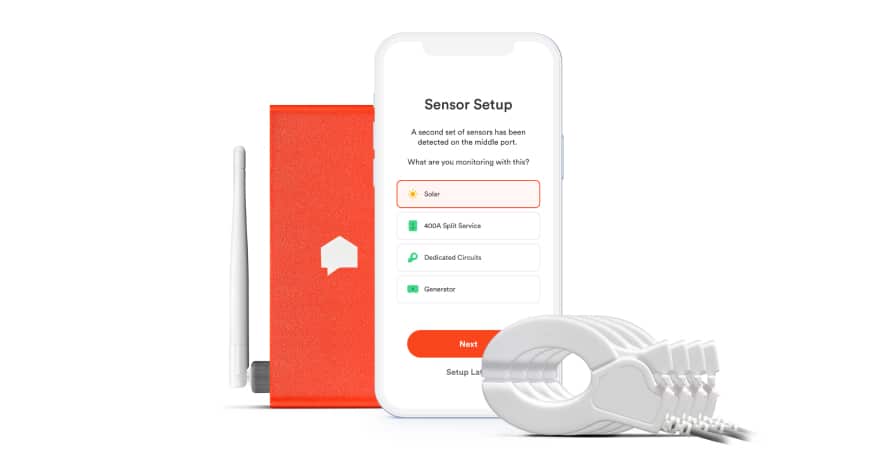More than two-thirds of American households – 65% – now have smart meters connecting them to the power grid, according to analysts at Guidehouse. That means utilities can get voltage and frequency from each AMI meter as well as consumption reads in intervals of 15 minutes or less. It’s been a game-changer.
Utilities with AMI throughout their operating territories have benefited from a host of grid-supporting applications, including outage management, proactive maintenance, improved power quality, and other applications. If 15-minute reads give utilities that much value, imagine how much more insight and grid-enhancing capability comes from meters that track household loads as well as grid voltage and frequency based on consumption samples vastly more detailed than every 15 minutes. Try samples that occur at 1MHz.
This is what’s coming to many of the next-generation smart meters now being deployed. Many are calling these new meters AMI 2.0. The result is near real-time insight for consumers and utilities alike. This capability delivers unparalleled situational awareness for distribution grid operators and new applications to help consumers, too.
Well-connected allies
A meter measures all the energy going into the premises. Behind the meter refers to any device sitting on the customer’s side of the meter. Devices on the grid side of the meter are located in front of the meter. The meter itself is a connection point for the grid and household power lines, as well as a measuring point showing how much energy flows between the two.
Next-generation meters do a lot more than measure energy. As noted earlier, the most advanced next-generation meters sample power flow at tens-of-thousands of times per second and make that data available on a sub-second basis. For consumers, that means the next-generation meter – one equipped with technology like that provided by Sense – can show electricity consumption in real-time on a device-by-device basis.
This enables consumers to see which appliances in their homes are energy hogs, how power consumption drops when they raise the set-point on an air conditioner’s thermostat, or even when someone operates the garage door opener, indicating someone has come home from work or school. A few years ago, such energy awareness was only available if you added something to a household electrical panel, which is where Sense technology started. Like the devices it measures, Sense was behind the meter. Now, it’s part of next-generation meters.
By choosing Sense-enabled meters, utilities give themselves a tool that can boost energy conservation behavior, support demand management programs, and boost customer satisfaction. Consumers love the savings and security Sense delivers. One consumer found an old freezer with a locked compressor and no thermal overload device. By detecting this problem, the homeowner was able to save a freezer full of food and possibly avoid a house fire that could have resulted from this overheating appliance.
Other consumers have found leaking water heaters, pumps that ran continuously, appliances that were close to failure, and more. This type of tool makes a great customer service feature utilities can offer consumers.
Catch the waveform, gain control
Those are behind-the-meter benefits. The value from waveform data for improving grid management is even greater. Here are a few “front-of-the-meter” applications utilities can use to improve system performance.
Enhanced power quality management
Sense-enabled meters measure voltage and current at tens-of-thousands of times per second to obtain its waveform data. Voltage is one of the metrics used in evaluating power quality, and so is power factor, which is what you have when the current waveform and voltage waveform are in sync. That condition is called a unity power factor, and it means the grid is delivering power without a lot of line losses. Rather, all the energy being generated is being consumed by one or more loads.
That’s not common, though. Inductive loads like motors, generators, and transformers can make the current waveform lag behind the voltage waveform. At that point, you have a power factor problem, and energy is being wasted.
When utilities can see the waveforms of voltage and current on their grids in near real-time, they’re able to see the steady state of their distribution networks as well as power factor issues. This helps utility engineers make smarter decisions on where they need to place voltage-regulating equipment like capacitor banks.
Fault detection and repair
The granularity of waveform data can help identify issues, such as high-impedance connections or hot spots, not just outages, and it allows utility engineers to have a high degree of certainty about what kind of fault occurred.
The availability of waveform data at the household level also helps engineers pinpoint the location on the network where the fault occurred so that crews can roll directly to the right spot and address the problem. By proactively finding and fixing faults, the utility benefits from enhanced reliability. The consumer benefits from avoided outages or quicker power restoration when an outage occurs. Consumers and utilities alike will benefit from the cost-savings of proactive maintenance.
EV detection
Not every electric vehicle owner installs a level 2 charger, which would trigger a notification to the utility that an EV will soon be taking up residence in someone’s home. The installer would take care of that. What’s more, not every EV owner will limit charging to his or her garage. With AMI 2.0 meters, utilities will know when someone plugs in an EV. This will allow utilities to verify that the circuit and transformer serving the premises can handle the added load. If needed, the utility can address asset deficiencies before overloading causes failure. Knowing who just plugged in an EV also allows the utility to reach out to that new EV owner with an offer for lower-cost off-peak charging or some other utility program.
Load forecasting and DER integration
The proliferation of distributed solar and the mobility of EV load have made relying on historic aggregate energy use to create a top down forecast a major problem. For each of those DER, time makes a difference.
The real-time, detailed grid visibility provided by meters that capture waveform data will transform load forecasting from an art to a science. As an article about the energy transition in PowerGrid noted, “Actual data produces more accurate projections, and correlating this information with weather data gives utilities an even better understanding of how and where usage might be changing so they can better plan investments.”
The article also noted that accurate, real-time data on consumption and usage patterns can help utilities know where and how they can accommodate distributed energy resources like rooftop solar arrays and customer-owned storage. The data tells utilities “where the system might be constrained or could quickly become constrained, providing critical information for planning investments.”
Accurate load forecasting will also save power providers money because it guides a utility’s power procurement. The more accurate the forecast, the less exposure to higher prices in real-time and capacity markets.
Distributed control
Shortly, some behind-the-meter loads may also become grid assets. Vehicle-to-grid (V2G) technology is already equipped in some cars today, such as the Nissan Leaf and Ford F150 Lightening. That will soon change, and when it does, V2G cars could be a huge asset to the grid.
As researchers at Wood Mackenzie pointed out, “60% of electric vehicles sold in the United States in the last year boasted a battery that was 40 kilowatt hours or larger. In contrast, the average residential stationary energy storage system is about 12-kilowatt hours.” That’s a lot of power utilities could leverage for grid support.
AMI 2.0 meters have the data and computing power to facilitate grid-edge applications that will help utilities tap the power of behind-the-meter resources like V2G cars. These meters can also help utilities with V1G, or managed-charging programs that will help boost EV adoption.
Isn’t it time you see what waveform data can do for your utility? Learn more by visiting Sense.







